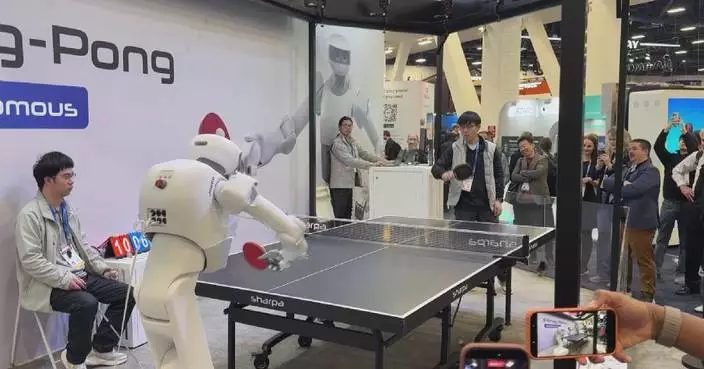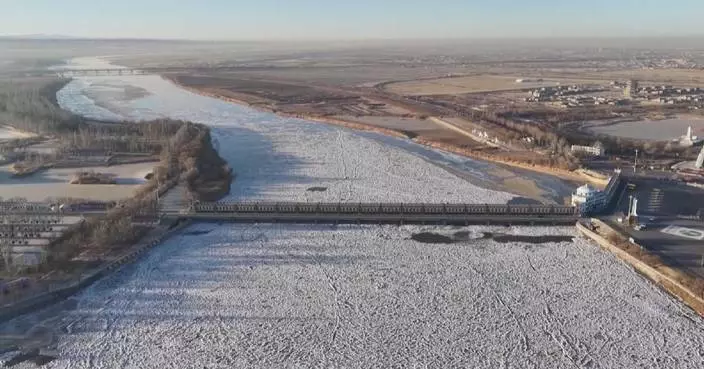A power outage struck the London Underground, causing widespread travel disruptions across the capital on Monday afternoon, Transport for London (TfL) confirmed.
TfL said the issues had been caused by a short power outage which happened at about 14:30 local time, leaving some passengers potentially stranded in train carriages within tunnels.
Power has since been restored, but delays and suspensions in major lines are ongoing, according to TfL.
By Monday evening, services on the London Underground began to gradually resume following the incident. The UK National Grid attributed the disruption to a "cable fault" on the transmission network in central London.
"I was working overtime until 6:00 [p.m.], and then because of the problems on the district line as well, it meant that I had to do a half an hour extra of overtime in order to make sure I could get back home. It seems like it was quite a big incident," said Jack, a resident.
The disruption marks another instance of the UK's transportation infrastructure facing challenges. In late March, London's Heathrow Airport grappled with a closure due to a power outage, resulting in the cancellation of numerous flights and leaving over 200,000 passengers stranded.

Power outage hits London Underground as lines suspended

Power outage hits London Underground as lines suspended

Power outage hits London Underground as lines suspended
Visiting Chinese Foreign Minister Wang Yi said Saturday China is willing to work with Lesotho to strengthen exchanges on governance experience, enhance coordination in multilateral affairs, and advance the China-Lesotho strategic partnership.
Wang, also a member of the Political Bureau of the Communist Party of China Central Committee, made the remarks when meeting with Lesotho Prime Minister Sam Matekane in the capital of Lesotho.
During the meeting, Wang congratulated Lesotho on the 60th anniversary of its independence this year, and spoke highly of Lesotho government's efforts to prioritize economic development and steer the African country onto a path of sustainable growth. Since the Beijing Summit of the Forum on China-Africa Cooperation (FOCAC) in 2024, the two sides have advanced cooperation under the 10 partnership action plans unveiled at the summit, successfully implementing a number of key projects to effectively promote Lesotho's development and revitalization, Wang said.
China stands ready to work with Lesotho to strengthen exchanges on governance experience, enhance coordination in multilateral affairs, and push for greater development of the China-Lesotho strategic partnership, he added.
Calling on the two sides to firmly support each other, Wang said that China will accelerate the implementation of its zero-tariff policy for African countries, including Lesotho, expand bilateral trade, investment and industrial cooperation, facilitate broader access of Lesotho's specialty products to the Chinese market, and continue to support Lesotho's national development.
China will continue to stand firmly with African countries, uphold justice for the Global South, including Lesotho, oppose unilateralism and acts of bullying, and work together to build a community with a shared future for humanity, Wang said.
On his part, Matekane said during the meeting that Lesotho cherishes its friendship with China and the strategic partnership between the two countries, and expressed gratitude for China's valuable support for the development of African countries, including Lesotho.
Lesotho firmly adheres to the one-China principle and resolutely supports China in safeguarding its core interests, he said, noting that his country stands ready to strengthen strategic mutual trust with China, expand people-to-people exchanges, jointly implement the outcomes of the FOCAC Beijing Summit, and deepen cooperation in areas such as infrastructure, manufacturing and energy.
Matekane stressed that China's zero-tariff policy for African products will inject new impetus into Lesotho's development. He also expressed Lesotho's willingness to strengthen solidarity and cooperation with China on multilateral platforms such as BRICS to jointly address global challenges.
On the same day, Wang also held talks with Lejone Mpotjoana, minister of foreign affairs and international relations of Lesotho.

China, Lesotho to strengthen exchanges, advance cooperation

China, Lesotho to strengthen exchanges, advance cooperation













